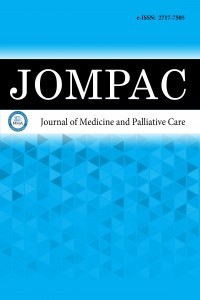1.
Rabie M. Meaning of development, a theory of sustainablesociocultural and economic development. 1st edition. New York:Palgrave Macmillan US (2016) ISBN:978-1-349-88759-0
2.
Meadows DH, Meadows DL, Randers J, Behrens WW. THELimits To Growth: A Report For The Club Of Rome’s ProjectOn The Predicament Of Mankind. New York Universe Books(1972) https://doi.org/10.1349/ddlp.https://www.clubofrome.org/publication/the-limits-to-growth/
3.
Erkol M, Artun H, Temur A, Okur M. 3E, 5E ve FeTeMM iledesteklenmiş öğrenme ortamının sürdürülebilir kalkınmakonusuna etkisi. J Comp Educat Res. 2022;10(19):73-102.
4.
United Nations. Transforming Our World: The 2030 AgendaFor Sustainable Development. Department of Economic AndSocial Affairs United Nations. 2015. Available at: https://sdgs.un.org/publications/transforming-our-world-2030-agenda-sustainabledevelopment-17981.
5.
Sachs JD, Lafortune G, Fuller G, Drumm E. Implementing theSDG stimulus. Sustainable Development Report 2023. DublinUniversity Press (2023) 10.25546/102924
6.
Chen L, Duan D, Han L, et al. Non-communicable disease-relatedsustainable development goals for 66 belt and road ınitiativecountries. Int J Health Policy Manag. 2023;12(6172):1-12.
7.
Kc A, Jha AK, Shrestha MP, Zhou H, Gurung A, Thapa J,Budhathoki SS. Trends for neonatal deaths in nepal (2001-2016)to project progress towards the sdg target in 2030, and risk factoranalyses to focus action. Matern Child Health J. 2020;24(1):5-14.
8.
Adeyinka DA, Muhajarine N, Petrucka P, et al. Inequities inchild survival in Nigerian communities during the SustainableDevelopment Goal era: insights from analysis of 2016/2017Multiple Indicator Cluster Survey. BMC Public Health. 2020;20:1613.
9.
Baltagi BH. Econometric Analysis Of Panel Data. 3rd ed. JohnWiley and Sons, New York (2005) ISBN-13 978-0-470-01456-1.
10.
Tunç Z. En küçük kareler ve temel bileşenler regresyonanalizlerinin karşılaştırılması. İnönü Üniversitesi Sağlık BilimleriEnstitüsü Biyoistatistik ve Tıp Bilişimi Anabilim Dalı YüksekLisans Tezi. 2018:1-70.
11.
Granger CWJ. Investigating causal relations by econometricmodels and cross-spectral method. Econometrica. 1969;37(3):424-438.
12.
Lewin A, Lin CF, Chu CSJ. Unit root tests in panel data: asymptoticand nite-sample properties. J Econometric. 2002;108(1):1-24.
13.
Im K, Peseran MH, Shin Y. Testing for unit roots in heterogeneouspanels. J Econometrics. 2009;115(1):53-74.
14.
Akyüz HE. Vektör otoregresyon (var) modeli ile iklimseldeğişkenlerin istatistiksel analizi. Ulusl Mühendislik AraştGeliştirme Derg. 2018;10(2):183-192.
15.
Lusting N. Investing in health for economic development: thecase of Mexico. Helsinki: Wider Research Paper. The UnitedNations University World Institute for Development EconomicsResearch. (2004). No. 2006/30. ISBN:9291907987.
16.
Karagül M. Beşeri sermayenin iktisadi gelişmedeki rolü veTürkiye’deki önemi. Afyon: Afyonkarahisar Kocatepe ÜniversitesiYayınları (2002) Yayın No: 37. 9757150487, 9789757150480.
17.
Kartal T, Gursoy E. Sürdürülebilir kalkınma amaçlarında (2015-2030) emzirmenin önemi ve Türkiye’deki mevcut durum ışığındahemşireye düşen görevler. Mersin Üni Tıp Fak Lokman Hekim TıpTarihi Folkl Tıp Derg. 2020;10(2):147-153.
18.
Zulfiqar A, Bhutta MB, Black RE. Global maternal, newborn,and child health—so near and yet so far. New England J Med.2013;(369):2226-2235.
19.
Pritchett L, Summers L. Wealthier is healthier. J Human Resour.1996;31(4):841-868.
20.
Say L, Chou D, Gemmill A, et al. Global causes of maternal health:a WHO systematic review. Lancet Global Health. 2014;2(6):e323-e333.
21.
Morrison J, Malik SMMR. Population health trends and diseaseprofile in Somalia 1990-2019, and projection to 2030: will thecountry achieve sustainable development goals 2 and 3? BMCPublic Health. 2023;(23):66.
22.
Lee Y, Kim SY. Public health law coverage in support of thehealth-related sustainable development goals (SDGs) among 33Western Pacific countries. Globalization Health. 2019;(15):29.
23.
Biermann F, Hickmann T, Sénıt CA. The political impact of thesustainable development goals; transforming governance throughglobal goals? Cambridge University Press (2022) Available at:www.cambridge.org/9781316514290
24.
Daher-Nashif S, Bawadi H. Women’s health and well-being in theunited nations sustainable development goals: a narrative reviewof achievements and gaps in the gulf states. Int J Environ ResPublic Health. 2020;17(3):1059.
25.
Sharrow D, Hug L, You D, et al. Global, regional, and nationaltrends in under-5 mortality between 1990 and 2019 withscenario-based projections until 2030: a systematic analysisby the UN Inter-agency Group for Child Mortality Estimation.Lancet Global Health. 2022;10(2):e195-e206.

